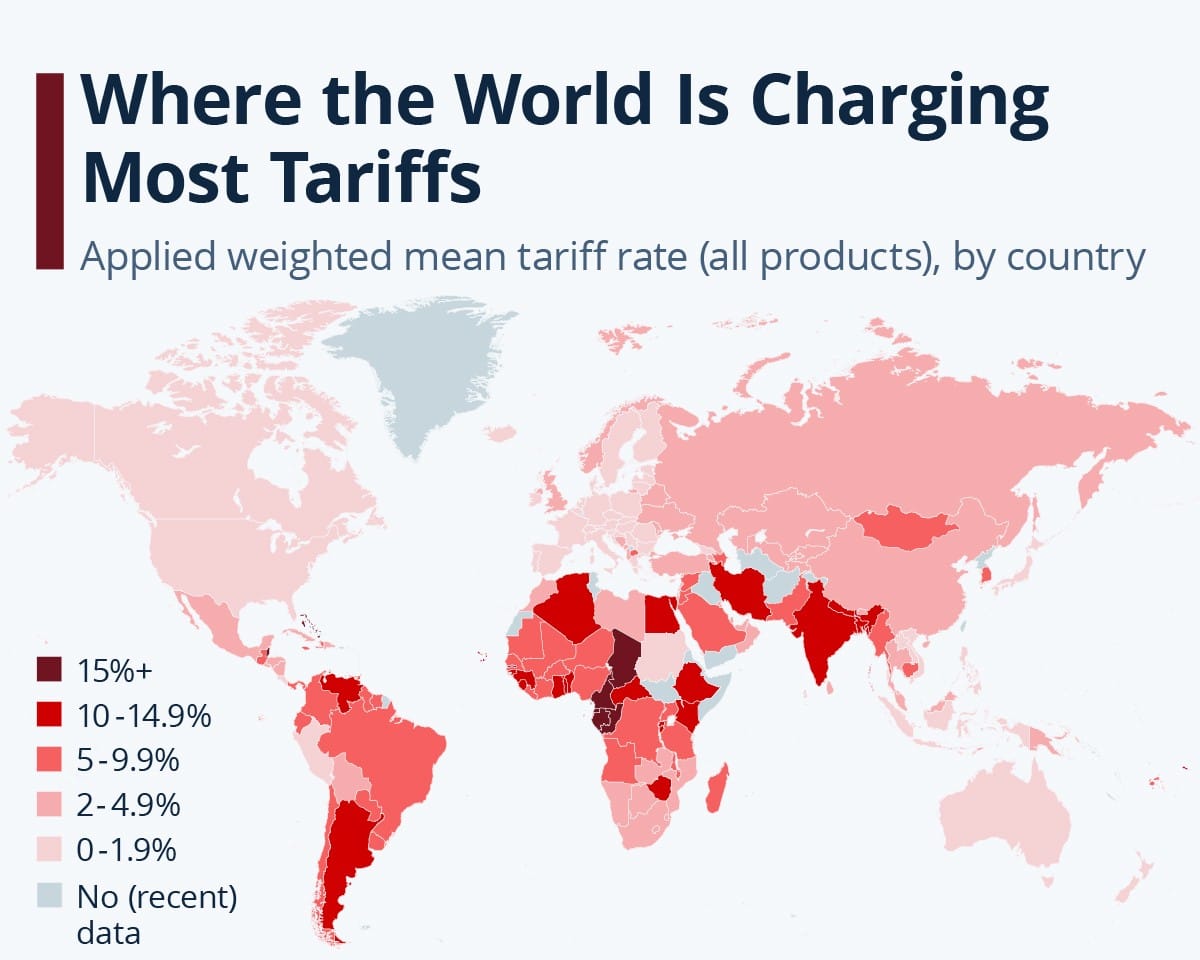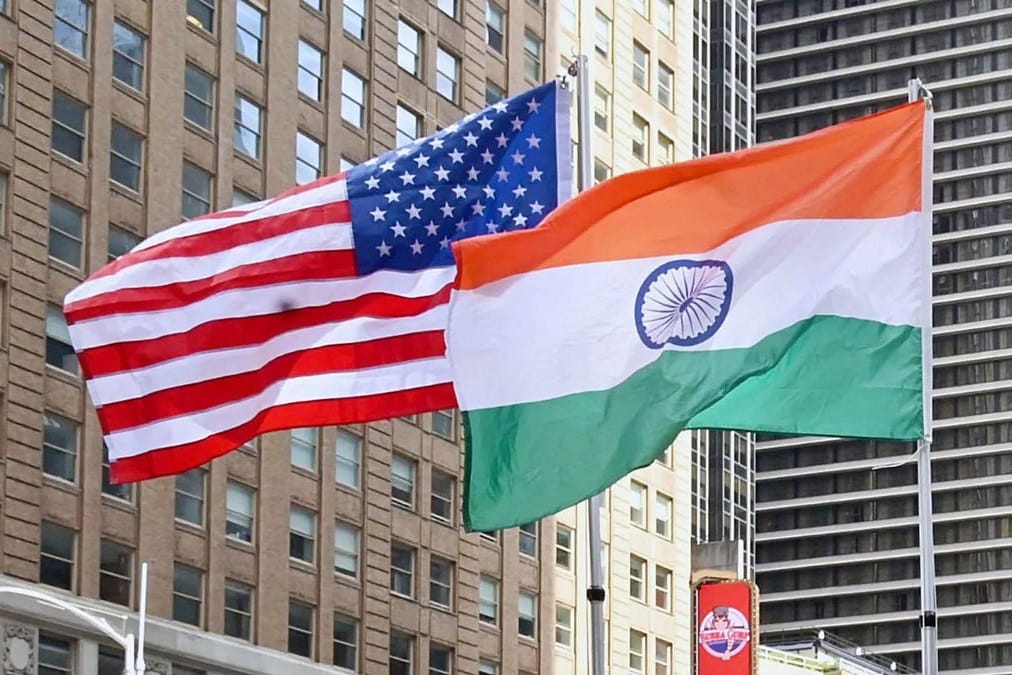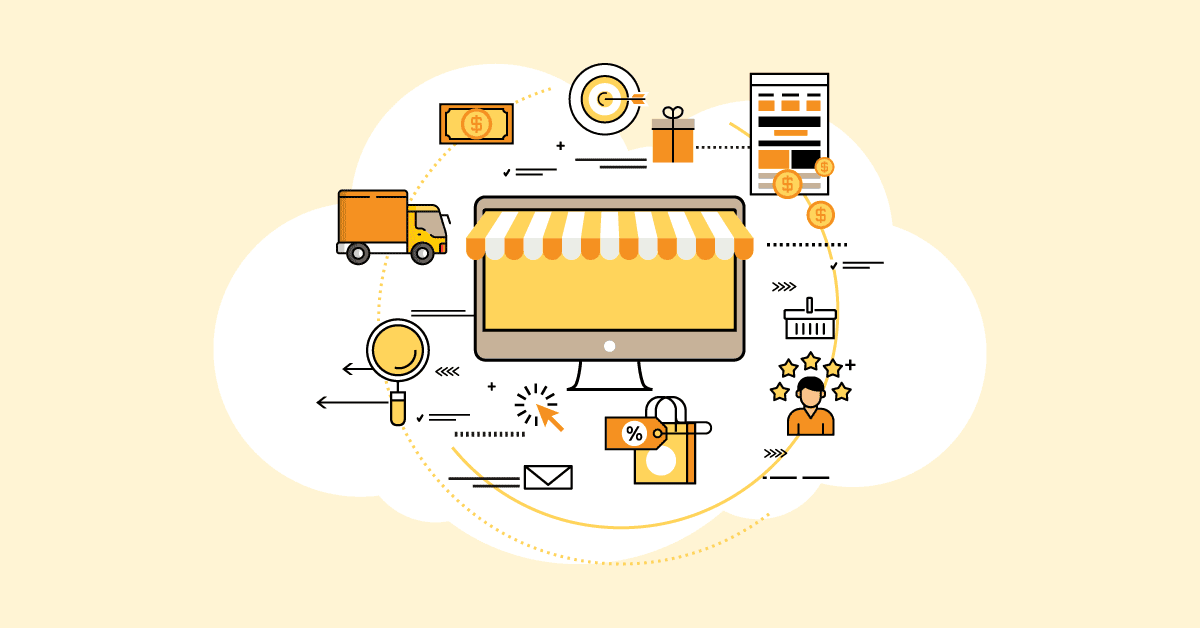“We weren’t expecting this curveball"
That’s the sentiment echoing across India’s buzzing e-commerce corridors, from tech hubs in Bengaluru to export-driven warehouses in Surat. The U.S. just slapped a whopping 26% tariff on Indian imports, and the impact? It’s nothing short of a jolt to businesses thriving on international demand — especially those sending products across the seas through platforms like Amazon, Shopify, and Etsy.

Source: Statista
On 9 April 2025, the United States — under President Donald Trump — officially imposed a 27% tariff on Indian goods entering the U.S., as part of a sweeping new protectionist trade policy. While the initial White House tariff chart listed India's rate at 26%, the signed executive order confirmed it at 27%, causing widespread confusion — and anxiety.
India, once seen as a strategic ally in America’s Indo-Pacific gameplan, now finds itself caught in the crosshairs of Trump’s boldest economic gamble yet.
🔥 From Trade Partner to Target?
Before this move, the average U.S. tariff on foreign goods was just 3.3% — among the world’s lowest. In contrast, India’s tariffs averaged 17%, prompting Trump to label India a “tariff king” and a “trade abuser”.
Now, India joins a growing list of countries facing steep penalties:
China – 54%
Vietnam – 46%
Thailand – 36%
Bangladesh – 37%
India – 27%
Clearly, this isn’t just about India — it’s about remaking the rules of global trade.
📉 The Immediate Fallout for Indian E-Commerce
Indian exporters, particularly e-commerce brands in sectors like fashion, jewelry, electronics, toys, and home goods, are suddenly in a pricing nightmare.
What was once a ₹2000 ($24) product may now cost over $30+ in the U.S., factoring in duties and shipping — killing the competitive edge many Indian sellers relied on.
Sectors at risk:
📱 Electronics (especially mobile components, chargers, wearables)
🧩 Toys and Games
🚗 Automobile components
🐟 Marine exports
🏗️ Engineering goods and light machinery
India’s ambitious Production-Linked Incentives (PLI) program, launched to boost manufacturing in electronics, may suffer a setback if these products become uncompetitive due to tariffs.
📦 Small Exporters, Big Pain
Indian e-commerce is powered by thousands of MSMEs — small sellers exporting via Amazon, Etsy, Shopify, and niche global marketplaces. These businesses were just starting to ride the cross-border wave, boosted by rising demand in the U.S. for “Made in India” goods.
Now, they’re being asked to absorb a 27% tariff or raise prices.
Both options spell trouble.
“We’re not Apple or Samsung. A 27% hike wipes out our margin — and then some,” says a Delhi-based D2C electronics founder.
Learn more about how Amazon’s models work for Indian sellers and how SellerFlex might be a game-changer.

⚖️ But Is There a Silver Lining?
Yes — and it’s a big one.
Trump’s tariff storm has hit China, Bangladesh, Thailand, and Vietnam even harder. This could open up critical market space for India, especially in:
👚 Textiles & Apparel (as Bangladesh and China face heavier duties)
🛠️ Machinery
🧪 Semiconductor packaging & testing (as Taiwan sees 32% tariffs)
According to Global Trade Research Initiative (GTRI), India stands at a strategic inflection point. If it can strengthen infrastructure, streamline trade, and attract investment, it may position itself as an alternate manufacturing hub — one that fills the vacuum left by China’s trade decoupling.
But experts caution: this opportunity is narrow and time-sensitive.
🚨 What’s Holding India Back?
“India has treated garments like a sunset sector. We didn’t invest. We didn’t build capacity,” says Biswajit Dhar of the Council for Social Development.
Some of India’s biggest barriers aren’t tariffs — they’re logistics, red tape, and unpredictable policy.
Here’s what India must fix:
🏭 Improve logistics & port infrastructure
🛃 Streamline customs and certification
🔧 Ease restrictions on key imports (like dairy, tech, and medical devices)
💼 Offer consistent trade policies
🧠 Strengthen IPR and trade secret frameworks
Without these, even the best tariff advantage will fall flat.
🧠Strategic Responses for Indian E-Commerce Businesses
To navigate these challenges, Indian e-commerce companies can consider the following strategies:
- Diversify Market Presence: Exploring and expanding into other international markets can reduce reliance on the U.S. and spread risk.
- Optimize Supply Chains: Enhancing supply chain efficiency and exploring cost-effective logistics solutions can help mitigate increased costs.
- Invest in Brand Value: Building strong brand recognition and emphasizing unique value propositions can justify premium pricing and retain customer loyalty.
- Engage in Policy Advocacy: Collaborating with industry associations and government bodies to advocate for favorable trade terms or seek exemptions can be beneficial.
👉 For more insight, read: Success in the Indian e-commerce market: Insights for Amazon sellers
📌 Final Word
This isn’t just a tariff — it’s a litmus test for India's e-commerce resilience.
🚧 Threats:
Margin erosion for thousands of MSMEs
Risk of losing ground to other developing economies
Setbacks to flagship government schemes like PLI
🚀 Opportunities:
Win market share from tariff-hit nations
Pivot to new markets and scale beyond the U.S.
Use policy pressure to accelerate India’s infrastructure and logistics reforms
The next 6–12 months are crucial. Indian e-commerce brands must choose: pivot or perish.


